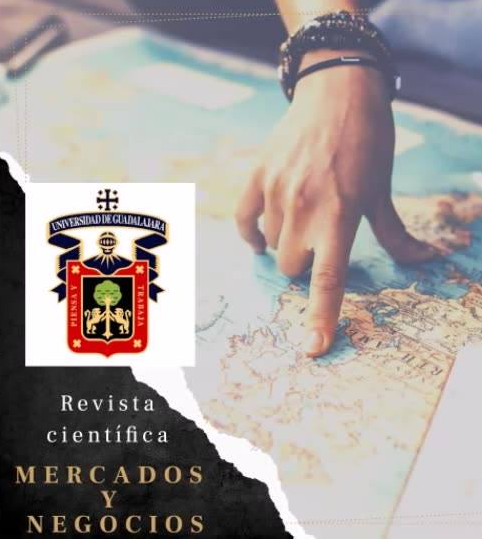Satisfacción del usuario en la industria hotelera como factor de competitividad
DOI:
https://doi.org/10.32870/myn.v0i22.5155Palabras clave:
satisfacción, industria hotelera, mezcla de la mercadotecniaResumen
En este trabajo se evalúan las percepciones de satisfacción del usuario de servicios de hospedaje en la zona metropolitana de Guadalajara (ZMG), con el objetivo de analizar los factores que infl uyen en ésta. La preferencia por seleccionar la industria hotelera tapatía se debe a las condiciones de desarrollo turístico que tiene Jalisco, como uno de los estados con más cantidad y variedad turística, y su capital, Guadalajara, como la segunda ciudad en importancia económica en México. Se revisó la literatura relacionada con el objeto de estudio, como son la calidad, la satisfacción y los diversos factores que infl uyen en ésta, con lo cual se presenta la situación actual que tiene la actividad turística en Jalisco y particularmente en la ZMG. Se aplicó una encuesta a huéspedes en hoteles de categorías 4, 5 estrellas y gran turismo; para finalmente presentar una propuesta de un modelo de satisfacción del usuario de servicios hoteleros.Citas
Bagozzi, R. P. (1997). Goal-Directed Behaviors in Marketing: The Role of emotion, volition, and motivation. Psychology & Marketing (1986-1998), 14(4), 309.
Baumgartner, H. (2002). Toward a personology of the consumer. Journal of Consumer Research, 29(2), 286-292.
Carman, J. M., & Langeard, E. (1980). Growth strategies for service firms.Strategic Management Journal, 1(1), 7-22.
Collins, A., Ortony, A., & Clore, G. L. (1988). The cognitive structure of emotions.
Cronin, J. J., Brady, M. K., & Hult, G. T. M. (2000). Assessing the effects of quality, value, and customer satisfaction on consumer behavioral intentions in service environments. Journal of retailing, 76(2), 193-218.
DeVeau, L. T., DeVeau, P. M., & Downey, J. F. (1996). Earn good marks.Lodging, April, 77-80.
Dube, L., Renaghan, L. M., & Miller, J. M. (1994). Measuring customer satisfaction for strategic management. The Cornell Hotel and Restaurant Administration Quarterly, 35(1), 39-47.
Fuchs, G., & Reichel, A. (2006). Tourist destination risk perception: The case of Israel. Journal of Hospitality & Leisure Marketing, 14(2), 83-108.
Gursoy, D. (2003). Prior product knowledge and its influence on the traveler's information search behavior. Journal of Hospitality & Leisure Marketing, 10(3-4), 113-131.
Heskett, J. L., Sasser, W. E., & Schlesinger, L. A. (1997). The service profit chain. New York.
Kandampully, J., & Duddy, R. (2001). Service system: a strategic approach to gain a competitive advantage in the hospitality and tourism industry.International Journal of Hospitality & Tourism Administration, 2(1), 27-47.
Kozak, M., & Rimmington, M. (2000). Tourist satisfaction with Mallorca, Spain, as an off-season holiday destination. Journal of travel research, 38(3), 260-269.
Ladhari, R., Morales, M., & Lakhal, S. (2005). Service quality, emotion and satisfaction in restaurant setting. In Proceedings of the Annual Conference of the Administrative Sciences Association of Canada, Marketing Division Toronto, Ontario May (pp. 28-31).
Lewis, B. R., & McCann, P. (2004). Service failure and recovery: evidence from the hotel industry. International Journal of Contemporary Hospitality Management, 16(1), 6-17.
Liljander, V. (1994). Modeling perceived service quality using different comparison standards. Journal of Consumer Satisfaction, Dissatisfaction and Complaining Behaviour, 7, 126-142.
McQuitty, S., Finn, A., & Wiley, J. B. (2000). Systematically varying consumer satisfaction and its implications for product choice. Academy of Marketing Science Review, 2000, 1.
Mohammad, T., Barker, S., & Kandampully, J. (2005). Multicultural student perceptions of fast food restaurant brands: an Australian study. Journal of Hospitality & Leisure Marketing, 12(4), 93-117.
Monroe, K. B. (1990). Price: Making profitable decisions. New YorkMcGraw-Hill.
Pearce, P. L., & Moscardo, G. M. (1984). Making sense of tourists' complaints.Tourism Management, 5(1), 20-23.
Oliver, R. L. (1981). Measurement and evaluation of satisfaction processes in retail settings. Journal of retailing.
Oliver, R. L. (1993). Cognitive, affective, and attribute bases of the satisfaction response. Journal of consumer research, 20(3), 418-430.
Patterson, P. G. (1993). Expectations and product performance as determinants of satisfaction for a high‐involvement purchase. Psychology & Marketing, 10(5), 449-465.
Samovar, L. A., Porter, R. E., & Jain, N. C. (1981). Understanding intercultural communication. Wadsworth Publishing Company.
Sparks, B., & Bradley, G. (1997). Antecedents and consequences of perceived service provider effort in the hospitality industry. Hospitality Research Journal,20, 17-34.
Yu, Y. T., & Dean, A. (2001). The contribution of emotional satisfaction to consumer loyalty. International journal of service industry management, 12(3), 234-250.
Descargas
Publicado
Cómo citar
Número
Sección
Licencia
Mercados y Negocios por Departamento Mercadotecnia y Negocios Internacionales. Universidad de Guadalajara se distribuye bajo una Licencia Creative Commons Atribución-NoComercial 4.0 Internacional.
Basada en una obra en http://revistascientificas.udg.mx/index.php/MYN/.
Los autores conservan los derechos de autor.








